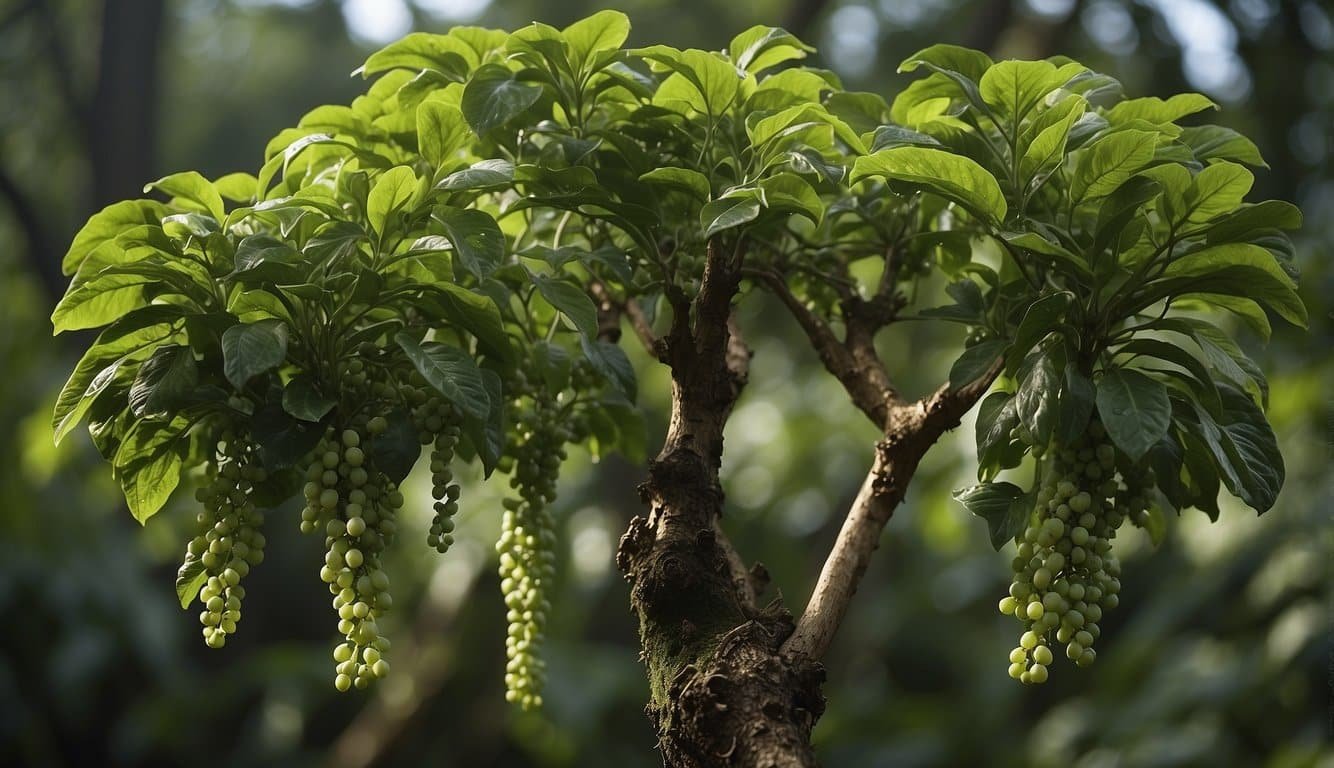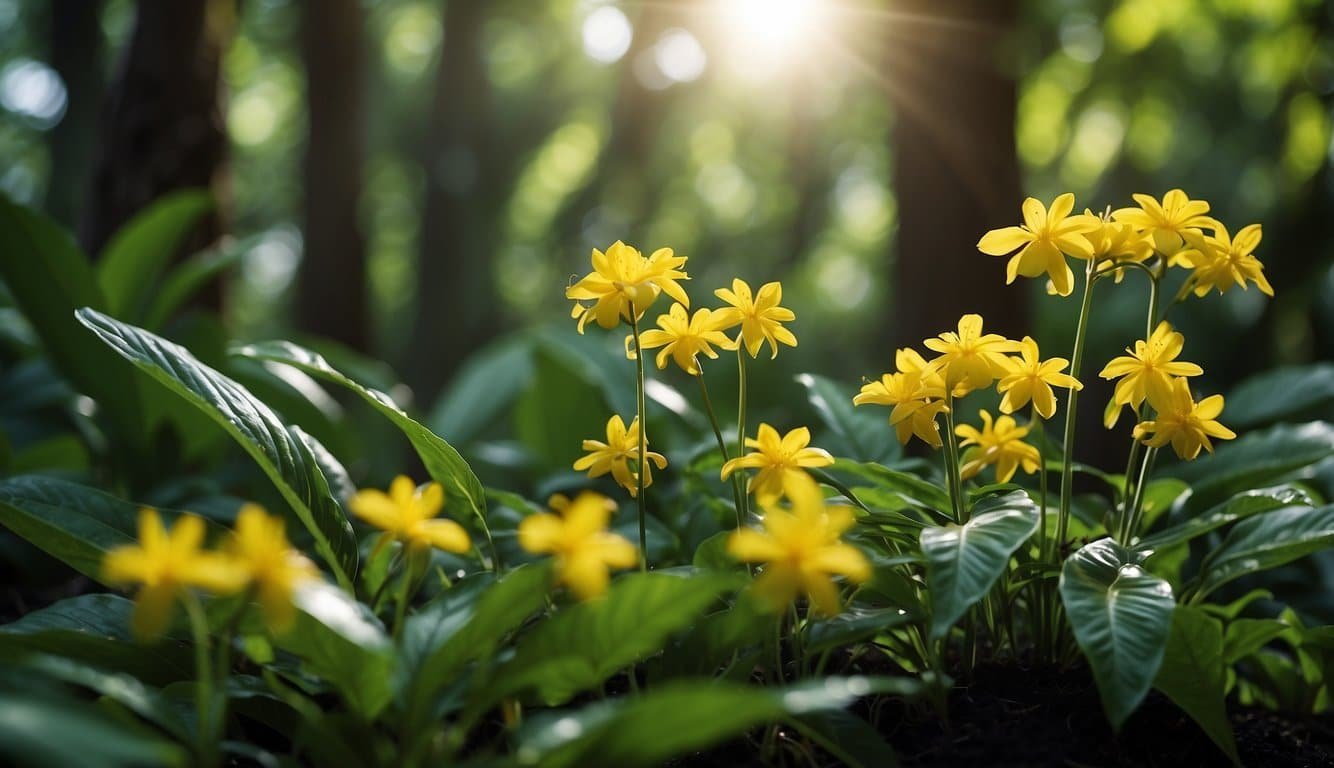Introduction to Iboga

The iboga plant is an intriguing shrub native to the tropical forests of Central Africa, primarily Gabon. Revered for its psychoactive properties, it holds a central place in indigenous African cultures.
Botanical Profile
Tabernanthe iboga, the scientific name for iboga, describes a small shrub that grows under the canopy of the tropical rainforests. It boasts yellowish or pink flowers, and when they fall away, they reveal small orange fruits. The most noteworthy part of the plant, however, lies beneath the soil—the root bark. This is where the psychoactive properties primarily reside. It’s among the Iboga alkaloids that we find ibogaine, a compound with remarkable and complex effects on the human brain.
Cultural Significance
In African countries like Gabon, iboga is much more than a plant; it is a vital part of the cultural fabric. To the indigenous peoples of Central Africa, particularly the Bwiti religion followers, iboga is a sacrament in spiritual ceremonies. It is used in coming-of-age rituals, to facilitate communication with ancestors, and to gain deeper insights into oneself. The experience it affords is considered deeply spiritual and cleansing, making iboga an irreplaceable element in these traditional African practices.
Ibogaine for Addiction Treatment
Ibogaine is a naturally occurring psychoactive compound found in the root bark of the African shrub Tabernanthe iboga. It has gained attention for its potential in treating various addictions, notably targeting opioids, cocaine, alcohol, and heroin. Despite promising applications, it remains a substance with complex legal and clinical research landscapes.
Therapeutic Applications
Discovered centuries ago by indigenous West Africans, ibogaine has been traditionally used in rituals and healing ceremonies. Today, it’s a topic of interest for its unique ability to alleviate withdrawal symptoms and reduce cravings associated with drug addiction. Clinics across various countries, drawing on this traditional use, administer ibogaine for addiction treatment, aiming to reset addiction patterns and aid in psychotherapy.
Clinical Research & Legal Status
While anecdotes of ibogaine’s efficacy abound, formal clinical trials are somewhat limited. However, research suggests its potential to interrupt addiction to substances like heroin and morphine. Due to variances in legal status, such as being classified differently under the Controlled Substances Act in the US, clinical research is challenging. Outside the United States, in countries like Canada, the Netherlands, and South Africa, ibogaine can be accessed in legal treatment settings.
Risks and Side Effects
Use of ibogaine is not without risks. Potentially severe adverse effects can include nausea, vomiting, tremors, headaches, seizures, and even fatalities primarily due to preexisting health conditions or improper dosing. Thus, careful medical supervision is critical. Opioid-dependent individuals may face additional risks, as ibogaine also interacts with the body’s liver enzymes, which process opioids. While research is ongoing to develop safer analogs like 18-MC, a compound designed to maintain therapeutic effects while minimizing adverse ones, the journey to regulatory approval, including by the FDA, continues.
Cultural and Psychoactive Uses

The iboga plant is deeply entwined with the spiritual traditions of Central Africa and has garnered interest for its unique psychoactive properties. From time-honored rituals to its contemporary uses in addressing addiction, ibogaine, the plant’s foremost active alkaloid, plays a significant role.
Traditional Ceremonies
In the lush, dense forests of Gabon, the Bwiti spiritual tradition reveres the iboga plant as a link to the ancestors. Consuming ibogaine during prolonged ceremonies, participants seek to enter a ‘waking dream’ state, where they experience vivid visions and guidance from the past. The role of the healer in these ceremonies is crucial, navigating the fine line between the visionary and potential poison, as high doses can be toxic. The process is deemed a rite of passage, believed to cleanse one of stress and heal emotionally.
Modern Psychedelic Exploration
Science has turned its gaze to ibogaine’s intriguing promise as a treatment for dependencies, especially on substances like nicotine. Preliminary research in countries like Brazil, Mexico, and New Zealand looks at how noribogaine, a metabolite of ibogaine, affects various neurotransmitter systems, including serotonin and acetylcholine. However, excitement is tempered by caution as the stimulant properties of ibogaine come with potential side effects, some fatal due to interactions with other substances. Yet, people across continents remain curious about this hallucinogen, exploring its potential in controlled, sometimes clinical contexts, often comparing it to a journey through one’s psyche, addressing deep-rooted issues such as anxiety.

